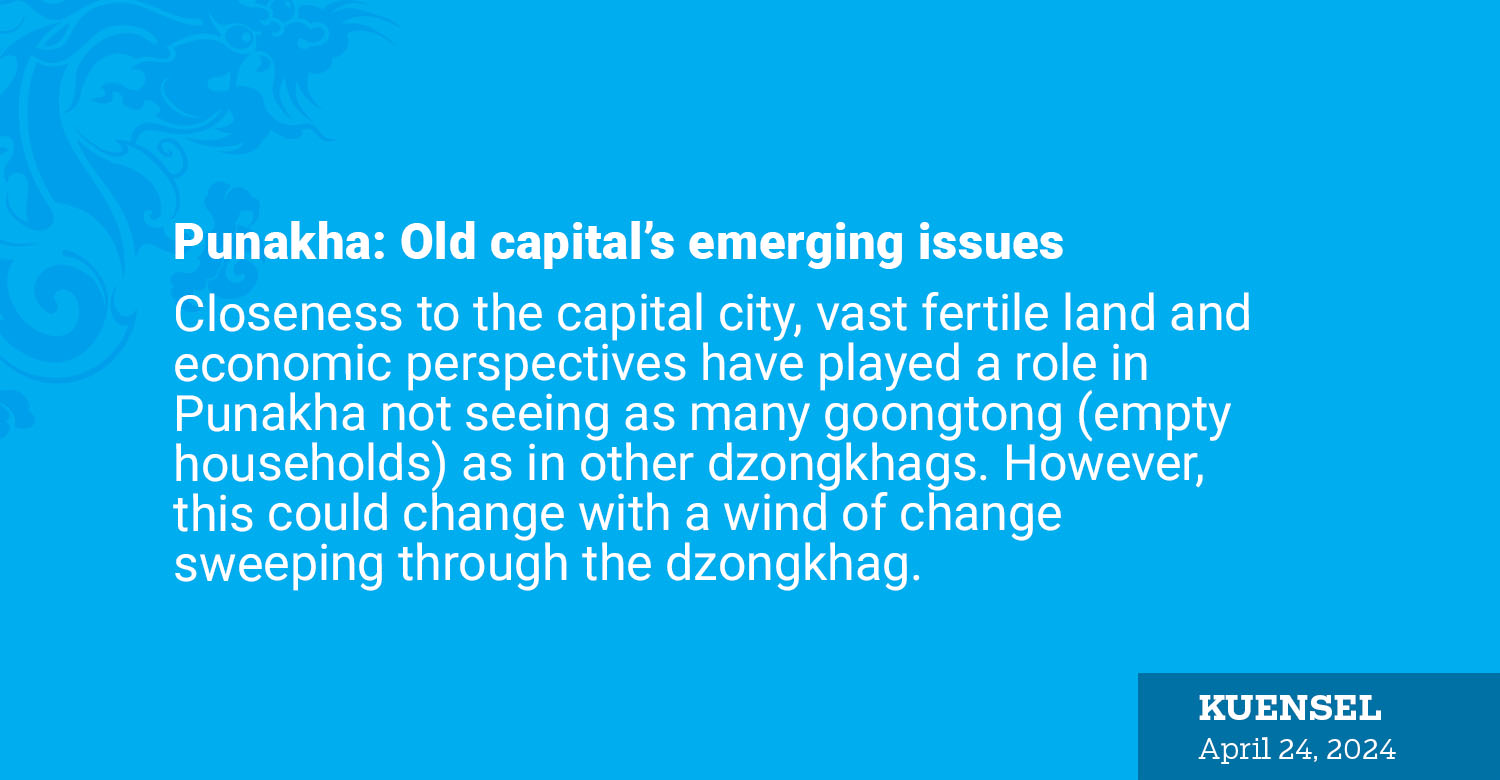
PUNAKHA: Closeness to the capital city, vast fertile land and economic perspectives have played a role in Punakha not seeing as many goongtong (empty households) as in other dzongkhags. However, this could change with a wind of change sweeping through the dzongkhag.
This change is forced by the high rural to urban migration, particularly among the young who are moving to the towns and cities in search for better opportunities.
There are 11 gewogs in the dzongkhag with all gewogs connected with motorable roads, mobile and internet networks. But the winds of change are blowing in gewogs like Shengana, Talo and Barp. Records show 22 gungtongs in Barp gewog, followed by 15 in Talo, four in Dzomi and three in Lingmukha.
Local leaders are concerned. The Kabjisa Gup, Sonam Dorji said that while Punakha currently doesn’t have a high number of Goongtongs, there is a risk given the migration patterns among the populace.
“Younger generations are migrating abroad after their studies while some are moving to urban areas for better opportunities leaving their parents in the villages, some of whom are following their children,” he said.
The gup believes that improvement in infrastructure and facilities at the gewog level could reverse the trend.
Talo gup, Rinzin Wangchuk, is observing a strange trend where houses are under lock and key for much of the year. “People come for the annual rituals only,” he said. Technically, the gup feels it qualifies as a goongtong. There are 15 goongtongs in the gewog.
A household without a resident for more than six months is deemed goongtong, according to the gup.
“There are goongtongs in my gewog because residents own land or properties in various locations and only return to the village once a year to perform annual rituals (Loche).”
Sonam Tobgay, the gup of Lingmukha said that there are many houses that remain locked for most of the year, but are visited for a few days for the annual loche, which are not referred as goongtongs.
Meanwhile, the impact is visible in the land they relied on for livelihood.
Records with the dzongkhag agriculture sector reveal that over 1,455 acres of land, encompassing both wet and dry areas, have been left fallow across the 11 gewogs of the dzongkhag.
Punakha, once the old capital city, is a popular tourist site. The goongtong issue raises concerns about the future trends.












